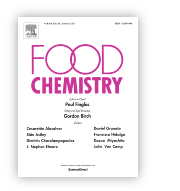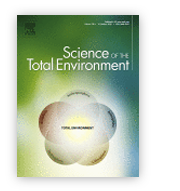
Research papers of the month – May 2023
We present the highest-score research papers of May 2023. These papers have ben published in journals with the highest Ministerial score – 200 points.
Magdalena Rudzińska; Anna Olejnik; Anna Grygier; Katarzyna Kowalska; Dominik Kmiecik; Anna Chojnacka; Witold Gładkowski; Aleksandra Grudniewska; R. Przybylski
Food Chemistry
Ministerial score = 200.0
Journal Impact Factor (2023) = 9.231 (Q1)
 The safety and thermoxidative stability of new diacyl-stigmasterylcarbonoyl-sn-glycerols (DAStGs) with two molecules of palmitic or oleic acids and one molecule of stigmasterol at the sn-2 or sn-3 position were studied. After heating to 60 °C, the compounds with stigmasterol at the sn-2 position were more stable than those with stigmasterol at the sn-3 position. The lowest level of degradation of stigmasterol after heating to 180 °C was detected for both compounds with oleic acid, followed by the samples with palmitic acid. The high content of SOPs, especially triolSt, as well as the high level of dimers showed the most effect on the cytotoxicity of DAStGs heated at both temperatures. DAStGs with oleic acid at sn-1,3 and stigmasterol at sn-2 position were the most stable compounds. Both oleic acid and the location of stigmasterol in the middle of the glycerol molecule play an important role in increasing the thermoxidative stability of stigmasterol.
The safety and thermoxidative stability of new diacyl-stigmasterylcarbonoyl-sn-glycerols (DAStGs) with two molecules of palmitic or oleic acids and one molecule of stigmasterol at the sn-2 or sn-3 position were studied. After heating to 60 °C, the compounds with stigmasterol at the sn-2 position were more stable than those with stigmasterol at the sn-3 position. The lowest level of degradation of stigmasterol after heating to 180 °C was detected for both compounds with oleic acid, followed by the samples with palmitic acid. The high content of SOPs, especially triolSt, as well as the high level of dimers showed the most effect on the cytotoxicity of DAStGs heated at both temperatures. DAStGs with oleic acid at sn-1,3 and stigmasterol at sn-2 position were the most stable compounds. Both oleic acid and the location of stigmasterol in the middle of the glycerol molecule play an important role in increasing the thermoxidative stability of stigmasterol.
DOI:10.1016/j.foodchem.2023.136194
Ewa Burszta-Adamiak; Małgorzata Biniak-Pieróg; Paweł Dąbek; Aleksandra Sternik
Science of the Total Environment
Ministerial score = 200.0
Journal Impact Factor (2023) = 10.754 (Q1)
 Rain gardens, as bioretention facilities belonging to blue-green infrastructure solutions, are becoming increasingly implemented in cities. The main reason for this is to support traditional drainage systems in receiving runoff from impermeable surfaces and managing it through temporary retention and infiltration into the ground. However, as practice shows, investors focusing on the construction of the systems and their commissioning skip their monitoring during the operating period, thus missing the opportunity to obtain reliable data on their hydrological performance under actual field conditions. The purpose of the study was to evaluate the effectiveness of a rain garden, located in an urban area, to capture runoff from the roof of a building. The assessment was based on the results of measurements carried out in 2021 on the variability of the levels of water retained in the rain garden and on measurements of growing medium moisture content at several selected points in the rain garden depression against thermal and rainfall conditions. The results showed that the rain garden demonstrated good hydrological performance. This was proven by the observed direct infiltration of rainwater into the structural layer or the short retention time for rainfall events with a higher rainfall total. The highest growing medium moisture was observed in the area of rainwater inflow to the rain garden. The results of the research may be useful in the planning and realization of future investments with rain gardens, which are to be situated in areas of similar meteorological conditions.
Rain gardens, as bioretention facilities belonging to blue-green infrastructure solutions, are becoming increasingly implemented in cities. The main reason for this is to support traditional drainage systems in receiving runoff from impermeable surfaces and managing it through temporary retention and infiltration into the ground. However, as practice shows, investors focusing on the construction of the systems and their commissioning skip their monitoring during the operating period, thus missing the opportunity to obtain reliable data on their hydrological performance under actual field conditions. The purpose of the study was to evaluate the effectiveness of a rain garden, located in an urban area, to capture runoff from the roof of a building. The assessment was based on the results of measurements carried out in 2021 on the variability of the levels of water retained in the rain garden and on measurements of growing medium moisture content at several selected points in the rain garden depression against thermal and rainfall conditions. The results showed that the rain garden demonstrated good hydrological performance. This was proven by the observed direct infiltration of rainwater into the structural layer or the short retention time for rainfall events with a higher rainfall total. The highest growing medium moisture was observed in the area of rainwater inflow to the rain garden. The results of the research may be useful in the planning and realization of future investments with rain gardens, which are to be situated in areas of similar meteorological conditions.
DOI:10.1016/j.scitotenv.2023.164153
Kinga Marek; Katarzyna Pawęska; Aleksandra Bawiec
Science of the Total Environment
Ministerial score = 200.0
Journal Impact Factor (2023) = 10.754 (Q1)
 Due to the constantly developing road network, a large number of new Motor Rest Area facilities are being built. The aim of the work is a critical assessment of the current wastewater management in the MRA and the proposal of appropriate solutions capable of purifying wastewater. The analysis of the current state of the MRA facilities was carried out on the basis of maps, own observations and an assessment of interest in the subject recently by reviewing publication resources. For this purpose, analyzes of the frequency of occurrence of keywords describing the issue were used. The solutions used so far are ineffective. This is mainly due to the perception of wastewater produced in MRA facilities as domestic wastewater. This assumption leads to the selection of inappropriate solutions, which in the long run can lead to an ecological disaster by introducing untreated sewage into the environment. The authors point to the possibility of introducing a circular economy in these places to relieve their environmental impact. Since, wastewater generated in MRA facilities, due to its specificity, is very difficult to treat. They are characterized by uneven inflow, a lack of organic matter, a low C:N ratio and very high concentration of ammonium nitrogen. Conventional activated sludge methods cannot cope with this. The need for changes and the use of solutions suitable for the treatment of wastewater with a high content of ammonium nitrogen has been demonstrated. The authors presented solutions that have the potential to be used in MRA facilities. The application of the proposed solutions from that moment will undoubtedly change the impact of MRA facilities on the environment and solve the problem of wastewater management on a large scale. There is still a lack of research on this thematic scope, which is a challenge authors have taken up.
Due to the constantly developing road network, a large number of new Motor Rest Area facilities are being built. The aim of the work is a critical assessment of the current wastewater management in the MRA and the proposal of appropriate solutions capable of purifying wastewater. The analysis of the current state of the MRA facilities was carried out on the basis of maps, own observations and an assessment of interest in the subject recently by reviewing publication resources. For this purpose, analyzes of the frequency of occurrence of keywords describing the issue were used. The solutions used so far are ineffective. This is mainly due to the perception of wastewater produced in MRA facilities as domestic wastewater. This assumption leads to the selection of inappropriate solutions, which in the long run can lead to an ecological disaster by introducing untreated sewage into the environment. The authors point to the possibility of introducing a circular economy in these places to relieve their environmental impact. Since, wastewater generated in MRA facilities, due to its specificity, is very difficult to treat. They are characterized by uneven inflow, a lack of organic matter, a low C:N ratio and very high concentration of ammonium nitrogen. Conventional activated sludge methods cannot cope with this. The need for changes and the use of solutions suitable for the treatment of wastewater with a high content of ammonium nitrogen has been demonstrated. The authors presented solutions that have the potential to be used in MRA facilities. The application of the proposed solutions from that moment will undoubtedly change the impact of MRA facilities on the environment and solve the problem of wastewater management on a large scale. There is still a lack of research on this thematic scope, which is a challenge authors have taken up.
DOI:10.1016/j.scitotenv.2023.164085










